To get a roundup of TechCrunch’s biggest and most important robotics stories delivered to your inbox every Thursday at 11 a.m. PDT, subscribe here.
Welcome back to Actuator and happy first day of CES! This will never not feel weird to say – and not just because of the highly objective “happy” bit. One of the dirty little secrets of CES coverage is that – by the official start of the show, us reporter types have already been on the ground hustling for at least 48 hours. I flew into Vegas on Monday, and have spent the past two days meeting with startups and investors, attending press conferences and and covering smaller pre-show events that purport to offer a microcosm of the week to come – putting the teapot before the tempest, if you’re a fan of mixed metaphors.
CES week lined up a little lopsided for Actuator. Today’s start of the show really refers to the floor opening. For us, that means the news coverage shifts a little bit, as we have more time for demos and carve out an hour between meetings here or there to seek out some weird stuff that would have almost certainly succumbed to the email deluge in our respective inboxes (did I mention that I came back to 1,600 unread messages last week?)
I write this preamble largely to say that what follows will be neither a definitive nor final account of robots at CES. The show will almost certainly spill into next week’s Actuator. Still, after weeks of meetings, emails and press releases, I do feel confident painting some relevant trends in broad strokes, as I shovel some hotel buffet scrambled eggs.
Another prevailing bit of weirdness in all of this is, of course, the whole pandemic dealie. I’d say conservatively that I’ve been to CES 15 times. They start blending after like number two. It’s been a constant in my life. A holiday sullying constant at the very beginning of every year. As such, it was strange sitting two in a row out, and it’s even stranger beginning back at it again. It’s great seeing all of the familiar faces slightly worse for wear after three very difficult years. It’s a homecoming for a town that has – more often than not – made your life hell, but for which you have a certain, unexplainable affection.
Again, it’s impossible to say anything definitive at this point, but I do feel comfortable noting that both the show and city just feel quieter in 2023. Many of the lifers decided the whole spectacle wasn’t worth it for them (a decision I certainly respect). The supply chain and economic crises are no doubt contributing to what feels like a general slowdown of announcements, and many of the bigger companies have drifted away from big, live shows in general.
In all of this, however, something altogether different is happening for robots. I’ve done robot roundups at the show for years, and for a long time it mostly felt like pulling teeth. Over the past several shows, however, there’s been a perfect storm. CES is starting to take robots seriously.
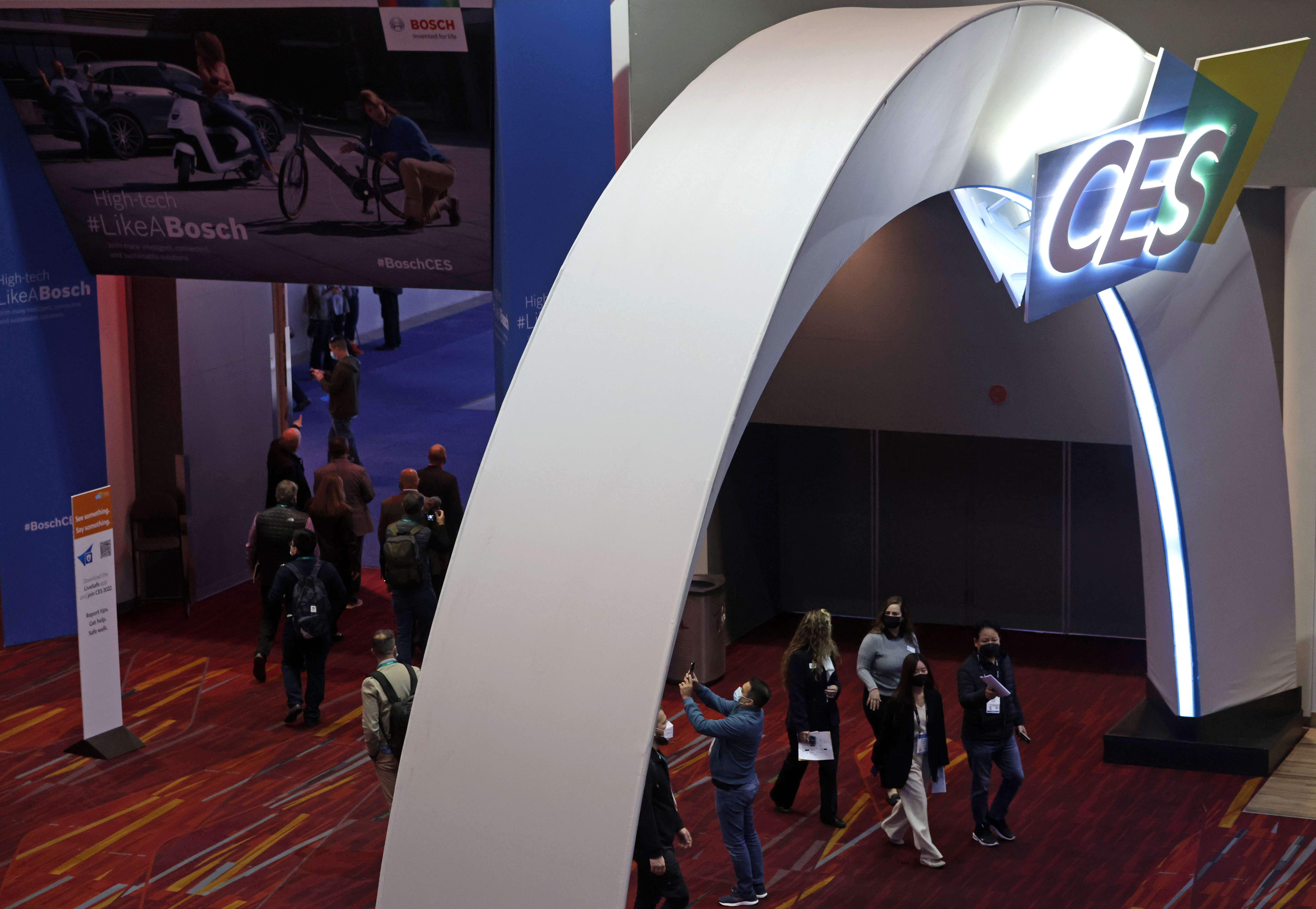
LAS VEGAS, NEVADA – JANUARY 05: Attendees pass through a hallway at the Las Vegas Convention Center on Day 1 of CES 2022, January 5, 2022 in Las Vegas, Nevada. CES, the world’s largest annual consumer technology trade show, is being held in person through January 7, with some companies deciding to participate virtually only or canceling their attendance due to concerns over the major surge in COVID-19 cases. (Photo by Alex Wong/Getty Images)
Putting the “R” in CES
I grabbed a cup of coffee with a robotics investor earlier this week who asked if I thought the show would be worth it for them. Their understandable misgiving in all of this is that the “C” in CES once stood for “consumer.” The CTA – the governing body that puts on the event – has been very aggressive in its insistence that CES simply stands for CES now. But this has always been a consumer show, as evidenced by the presence of firms like Samsung and Sony.
In 2023, however, someone who operates solely on the industrial side of the robotics equation could easily fill four-plus days here. CES is, by no means, a robotics show. But robotics’ slow permeation of technology and culture means they’re well represent and here to stay.
There are a few key drivers for the growing presence of robots in Vegas this week.
- The pandemic has accelerated the industry in general.
- Automakers are getting serious about investing in and acquiring robotics startups or building these technologies in-house. See: Ford’s Agility investments, TRI’s research and Hyundai’s events post-Boston Dynamics acquisition.
- Big firms like Amazon have been aggressively pushing consumer robotics.
That last one is important for a lot of reasons. Thing is, there have always been robots – or robot-adjacent products at the show, but the category is about as mixed as bags come. A lot of startups have come and gone over the years with products that couldn’t find a market. There are also plenty of products that have been called robots that certainly look like something close to a platonic ideal of the concept. But more often not, these are toys – and not particularly good ones.
We’ve also seen some extremely questionable robots trotted out on stage by companies like Samsung and LG. A robot demo has always been a quick and easy shorthand to demonstrate to consumers and shareholders that your company is committed to the future and futuristic things.
There is – of course – still a lot of that here. If anything, the broader excitement around the category has convinced those people that they’re very much on the right track. CES is also very much a show about being in the moment. You do your best to vet the validity of a product, but true due diligence is a near impossibility here.
Rounding up robotics
NVIDIA’s – along with other key chipmakers – usually has a sizable presence. It was nice to see a little focus on the robotics side of things. The company debuted an update to its Isaac Sim that brings simulated human robots into the equation, along with more realistic lighting conditions through ray tracing and the ability to render real-time sensor data.
“To minimize the difference between results observed in a simulated world versus those seen in the real world,” Nvidia notes, “it’s imperative to have physically accurate sensor models.”

Image Credits: NVIDIA
Labrador, which has been something of a CES mainstay over the past few years, announced a partnership with Amazon (an outgrowth of support from the Alexa Fund) that leverages the Echo Show 10 as almost a robotic telepresence-style display.
“The proof-of-concept demo with the Echo Show 10 is a preview of what we will be testing in our next rounds of pilots with care providers,” CEO Mike Dooley said in a release. “Capabilities like this can make a dramatic difference in the quality of people’s lives and their ability to live independently while staying connected with others, and we’re grateful to Amazon’s team for their support on this project.”
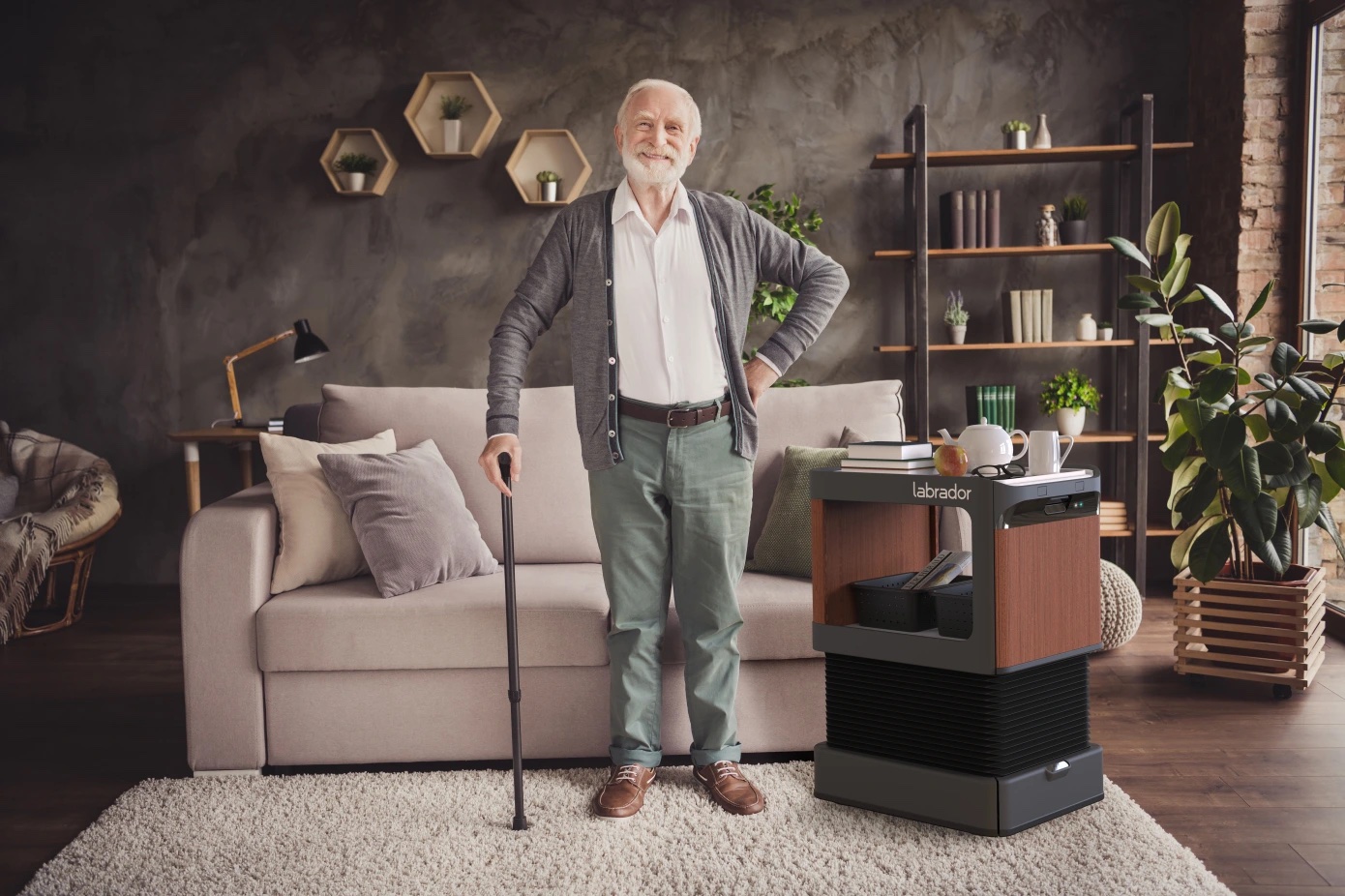
Image Credits: Labrador Systems
Speaking of eldercare robots, Aeo is a nice little CES success story. The company tells me that getting noticed at the 2018 event led to its adoption in Japanese hospitals, care facilities and schools. It’s a small humanoid robot with one dexterous arm that can open doors and another that has a UV light for disinfecting surfaces – a big hit during the pandemic for obvious reasons.
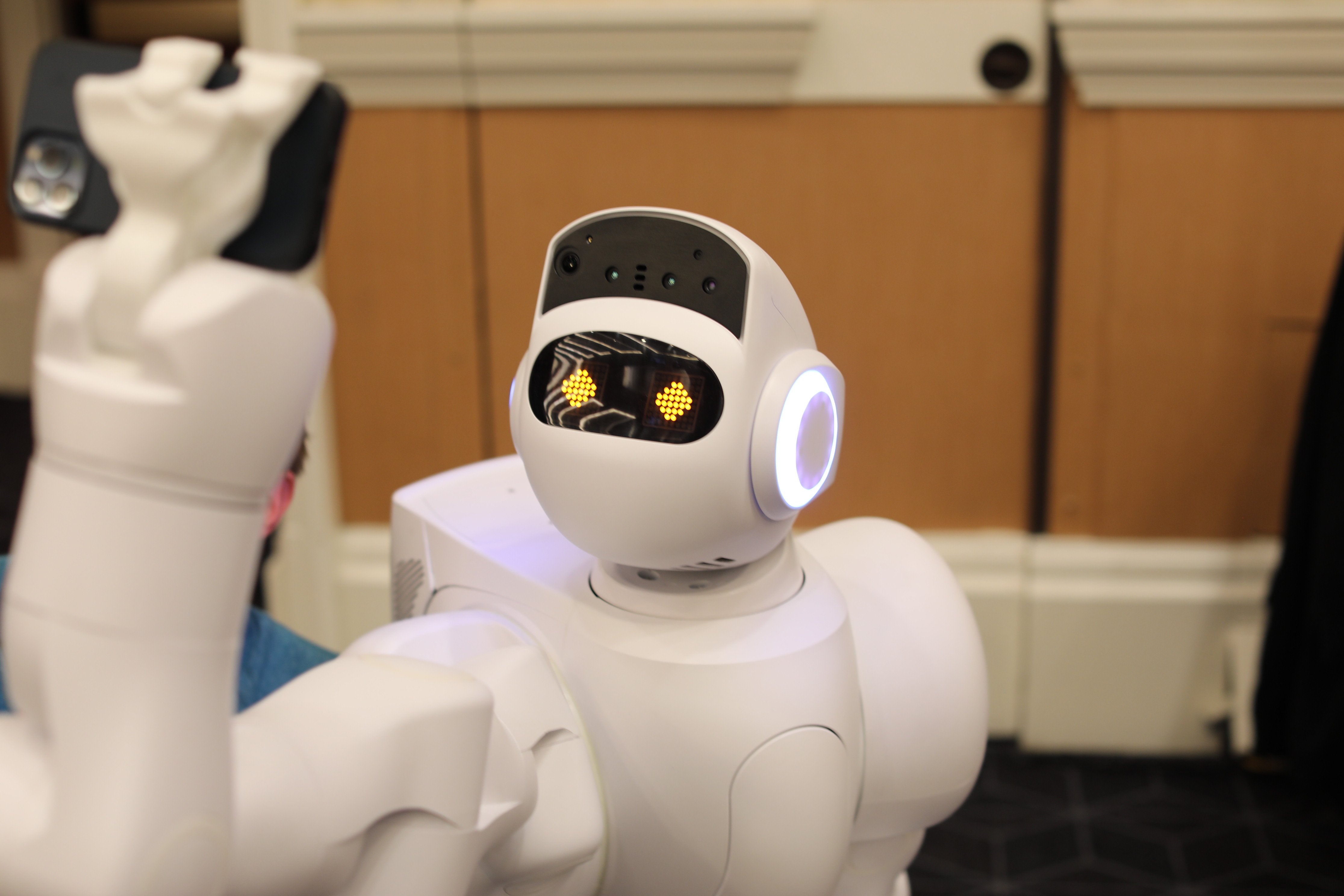
Image Credits: Brian Heater
Yeti is the first of delivery robots we’re sure to see this week. What makes Ottonomy’s robot particularly interesting is the inclusion of an auto dispense mechanism that can drop packages on porches or directly into a compatible locker for safe keeping.
“During the validation processes we ran pilots with airports, retailers and postal services which gave us the deep insights we needed on the most effective use cases and scalability,” s co-founder and CEO Ritukar Vijay says of the company’s early deployments. “With our strategic alignment with Verizon and other enterprises, we are in the prime position to fill the gap that companies like Amazon and Fedex were not able to. As demand and the use cases for autonomous unassisted delivery continue to grow, we are positioned to provide robots as a service for restaurants, retailers and beyond.”
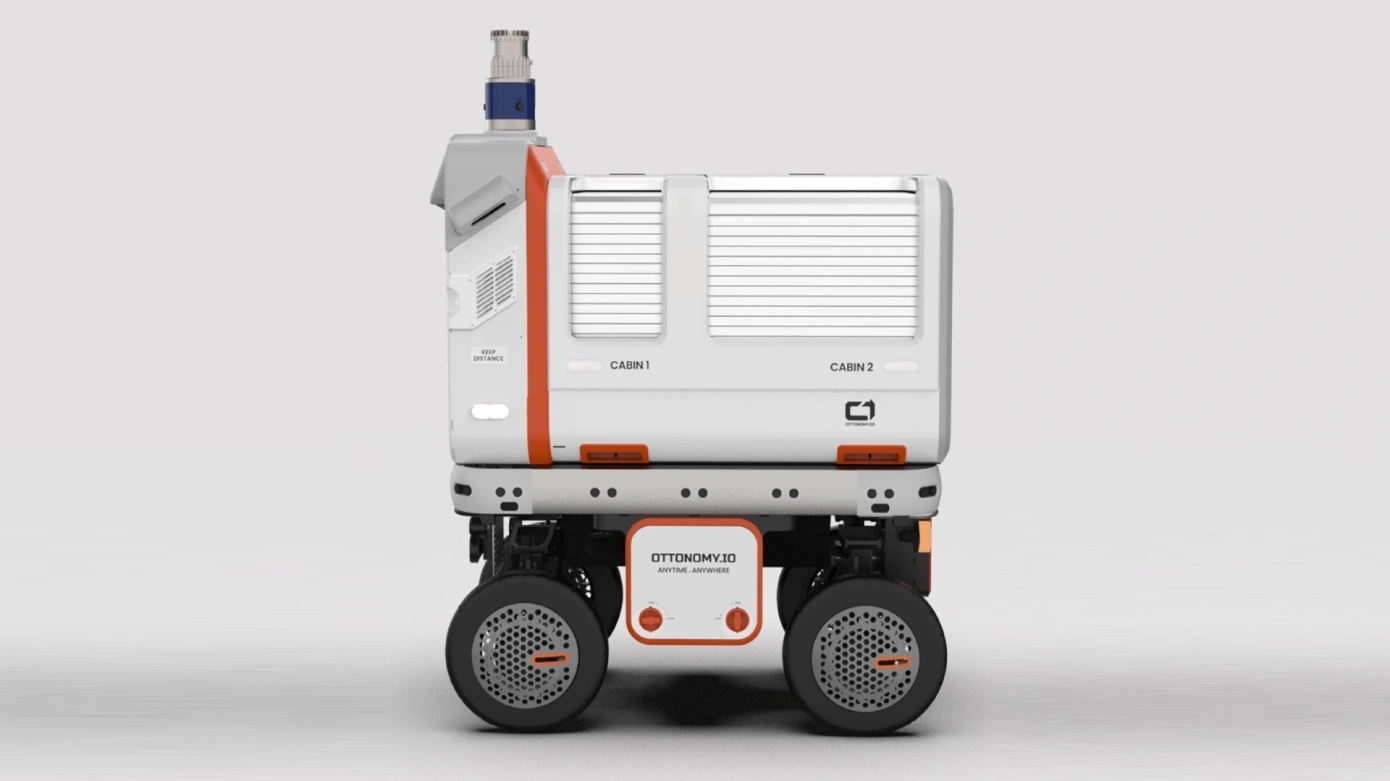
Image Credits: Ottonomy
And for the fun of it, here’s a breathing robot pillow called Fufuly from Yukai Engineering, the folks who brought you the cat pillow with the wagging tail. Quoting myself here (I know, I know).
The hardware startup says the product utilizes “respiratory entrainment,” which refers to a phenomenon where in the rhythm of a patient’s breathing matches that of a respirator. Here that basically means the person’s breathing matches up with the robot cushion, rather than the other way around.

Image Credits: Yukai Engineering
Lastly, Kyle rounded up some of the AI-powered gadgets from this year’s show, including a self-driving – and parking – stroller.
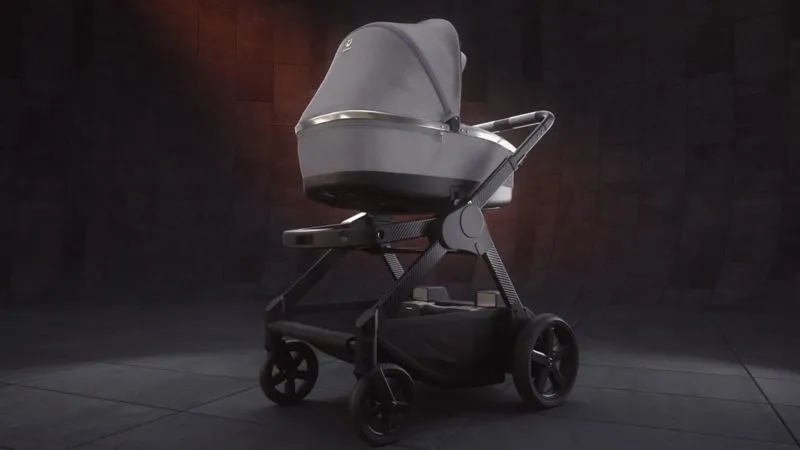
Image Credits: Glüxkind
All right, back to it. See you soon.
Consumer Robotics Show by Brian Heater originally published on TechCrunch








